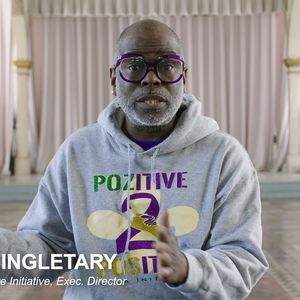Every day
hundreds of Kenyans from every walk of life visit the Hope
Center at the Coptic Hospital in Kenya's capital to meet
with doctors and receive life-prolonging HIV drugs,
compliments of the United States.
Before President
Bush started his signature HIV program, the people at
Hope Center would have died within a few years because the
drugs were either too expensive, unavailable, or
doctors didn't know how to prescribe them. Since 2003,
the number of Kenyans on antiretrovirals provided by
the United States has risen from 343 to 70,000,
providing HIV-positive Kenyans with a chance to work,
raise their children, and fight the epidemic.
The U.S. program,
known as the President's Emergency Plan for AIDS
Relief, ''was a new experience and in Kenya it expands
quickly and strongly, it was beyond the expectation of
anyone,'' said Dr. Aida Samir, chief executive officer
at the missionary hospital.
Kenya is the
second-largest recipient of funds from PEPFAR, which has
promised to spend $15 billion between 2003 and 2008 to fight
AIDS. Out of the 19 countries with PEPFAR programs,
Kenya's $200 million program is widely considered the
most successful and sophisticated.
PEPFAR provides
funding, advice, and monitoring to 275 treatment sites in
Kenya, where in 2001, according to the most recent figures
available, 700 people a day were dying from
HIV/AIDS-related diseases. In addition to
providing treatment, PEPFAR also funds care and support
services as well as prevention programs in
coordination with the Kenyan government.
''It shows that
with goodwill and adequate resources, there is
practically no limit to how much a developing country can do
to take care of its citizens,'' said Warren Buckingham
III, the PEPFAR director in Kenya.
Buckingham said
in 2007 PEPFAR plans to ensure that, for the first
time, all 1 million pregnant women in Kenya who visit a
clinic before giving birth will be tested for HIV.
Whoever tests positive will be given drugs to protect
their child from the virus, he said.
''It has changed
my life; I can live healthy and I don't fall sick,''
said one patient who now works at Coptic Hospital but asked
not to be named. ''Now I give back.''
But while the
treatment program is widely praised, critics of PEPFAR
complain that not enough is being done to prevent people
from contracting HIV.
Richard
Holbrooke, former U.S. ambassador to the United Nations who
now leads the Global Business Coalition on HIV/AIDS,
added that the treatment program might not be
sustainable because the number of people with HIV
continues to grow. According to the U.N. agency on AIDS,
there will be 4.3 million new infections in 2006.
''If the number
of people who need antiretrovirals increases every year,
it becomes a bottomless pit,'' he said Thursday during a
visit to Nairobi, where he publicly received an HIV
test. ''We have to turn the corner; the actual number
of people with the disease needs to go down.''
Democratic U.S.
representative Barbara Lee of California condemned a
provision in PEPFAR requiring that 33% of all money
committed to prevention programs be spent to promote
abstinence. She told reporters Wednesday that she
would introduce the Pathway Act to eliminate the
restriction, which she said has more to do with
conservative ideology than scientifically proven
successful programs. ''The Pathway Act seeks to
correct these policies and ensure we fund the strategies
that work,'' she said.
Two methods of
prevention that will likely receive scientific backing in
2007 are male circumcision and microbicide gels. Buckingham
said that under the current legislation, PEPFAR money
could not be spent on either.
''This epidemic
keeps changing,'' he said. ''We need to tweak the
legislation to reflect the changing environment.''
PEPFAR officials
argue a three-pronged HIV prevention strategy
emphasizing abstinence, fidelity, and condom use offers
people the best options to protect themselves from
AIDS.
Back at Coptic
Hospital, Samir and her senior HIV project manager, Nadia
Kist, have put up tents to deal with the overflow of HIV
patients under their care.
''It doesn't seem
real, the transformation,'' said Kist, who has worked
with the Coptic program since it began in 2004 with 300
people. It now serves 5,300. ''It was almost people
banging down the doors, coming by the thousands, it's
really miraculous.'' (AP)


















































































